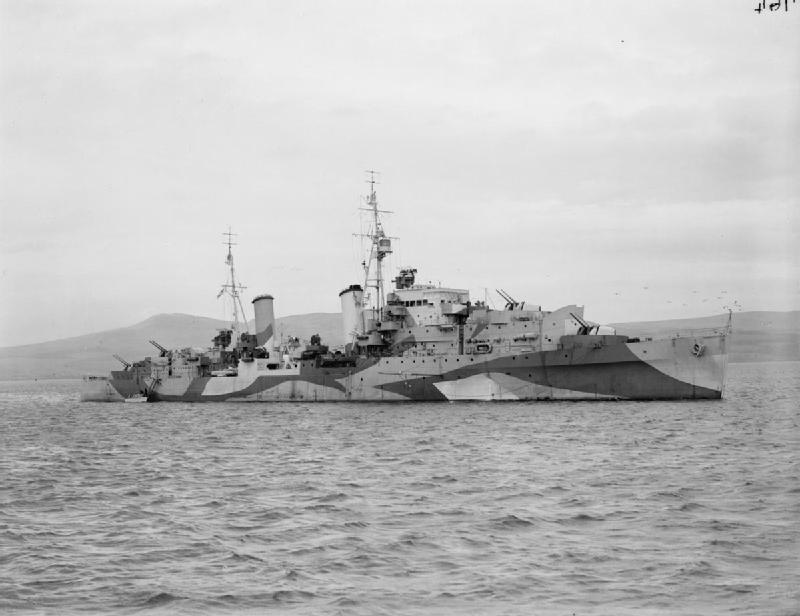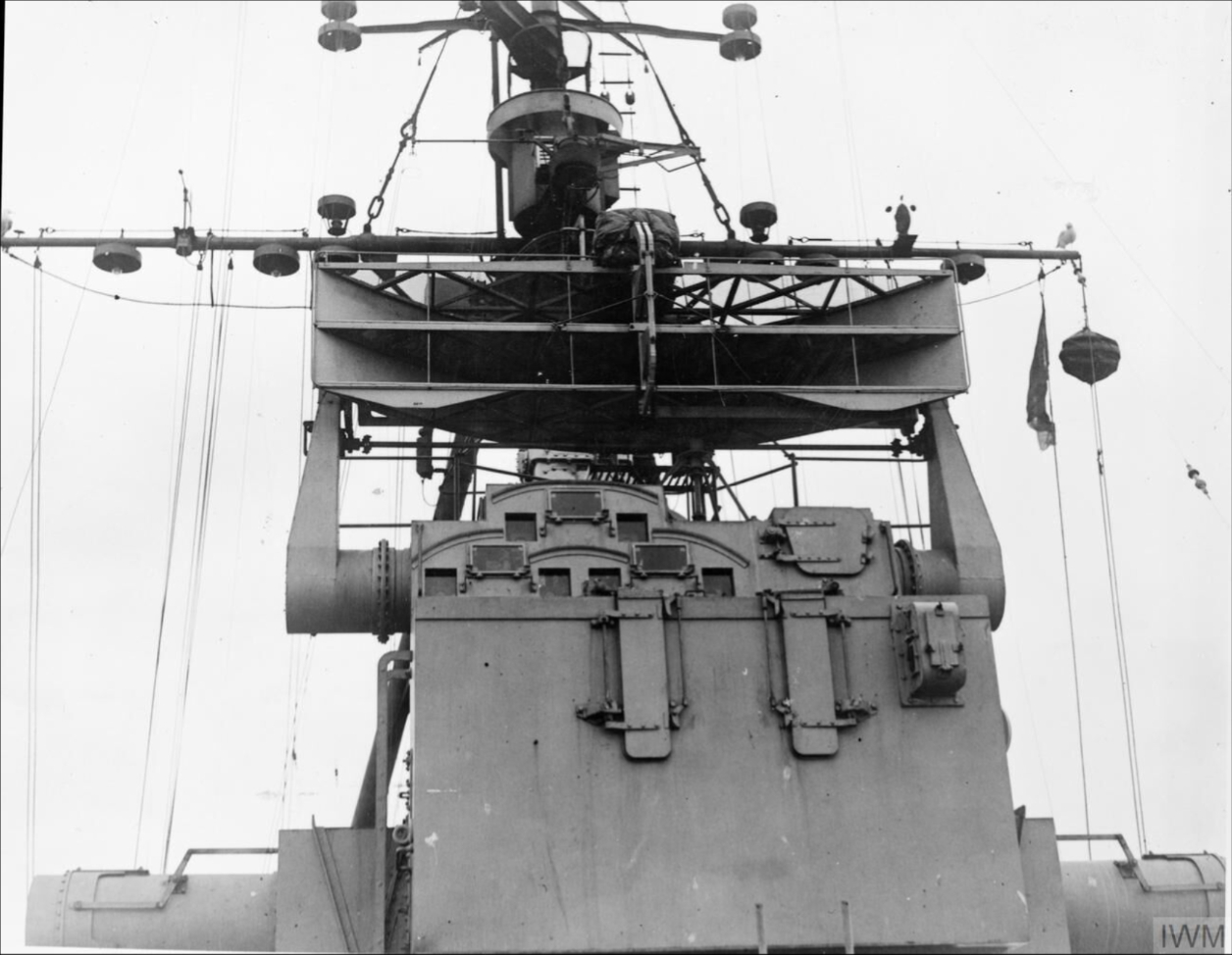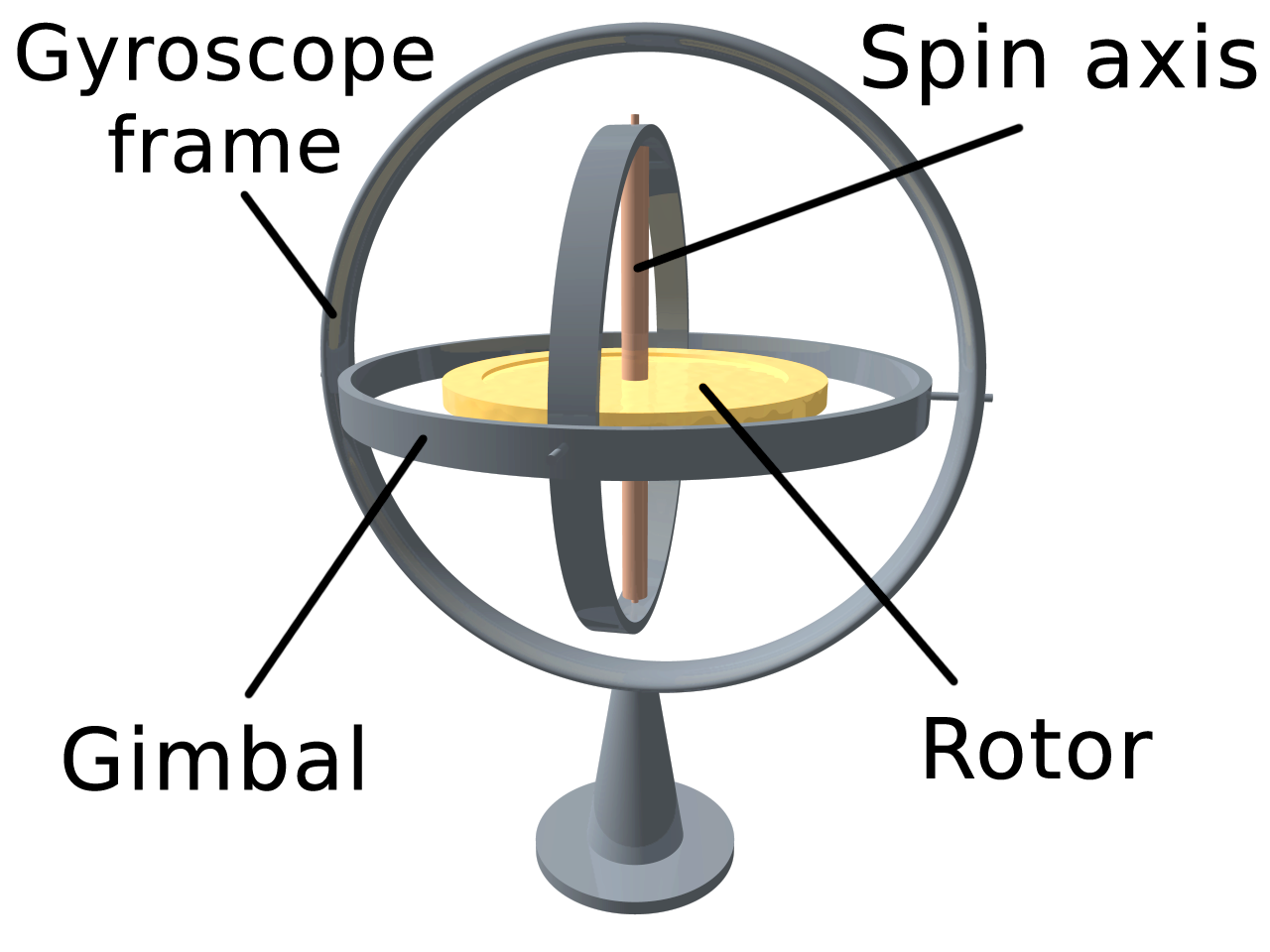|
High Angle Control System
High Angle Control System (HACS) was a British anti-aircraft fire-control system employed by the Royal Navy from 1931 and used widely during World War II. HACS calculated the necessary Deflection (ballistics), deflection required to place an explosive shell in the location of a target flying at a known height, bearing and speed. Early history The HACS was first proposed in the 1920s and began to appear on Royal Navy (RN) ships in January 1930, when HACS I went to sea in . HACS I did not have any stabilisation or power assist for director training. HACS III which appeared in 1935, had provision for stabilisation, was hydraulically driven, featured much improved data transmission and it introduced the HACS III Table. The HACS III table (computer) had numerous improvements including raising maximum target speed to , continuous automatic fuze prediction, improved geometry in the deflection Screen, and provisions for gyro inputs to provide stabilisation of data received from the dire ... [...More Info...] [...Related Items...] OR: [Wikipedia] [Google] [Baidu] |
HMS Scylla 1942 IWM FL 2932
HMS or hms may refer to: Education * Habib Medical School, of the Islamic University in Uganda * Hartley–Melvin–Sanborn Community School District of Iowa, United States * Harvard Medical School of Harvard University * Heidelberg Middle School, a former American school in Heidelberg, Germany * Hongwanji Mission School, in Hawaii, United States * Horley Methodist School, Teluk Intan, in Malaysia Medicine and science * Hartford Medical Society, an American professional association based in Hartford, Connecticut *Health management system * Hexose monophosphate shunt, an alternative name for the pentose phosphate pathway * Highly migratory species, a classification of fish * Hypermobility spectrum disorder, formerly hypermobility syndrome or HMS * HMS, a brand name of medrysone Technology *Huawei Mobile Services, proprietary apps and services from Huawei bundled with Android devices * HMS Networks, a company in the field of industrial communications * Heavy melting steel * H ... [...More Info...] [...Related Items...] OR: [Wikipedia] [Google] [Baidu] |
United States Navy
The United States Navy (USN) is the naval warfare, maritime military branch, service branch of the United States Department of Defense. It is the world's most powerful navy with the largest Displacement (ship), displacement, at 4.5 million tons in 2021. It has the world's largest aircraft carrier fleet, with List of aircraft carriers in service, eleven in service, one undergoing trials, two new carriers under construction, and six other carriers planned as of 2024. With 336,978 personnel on active duty and 101,583 in the Ready Reserve, the U.S. Navy is the third largest of the United States military service branches in terms of personnel. It has 299 deployable combat vessels and about 4,012 operational aircraft as of 18 July 2023. The U.S. Navy is one of six United States Armed Forces, armed forces of the United States and one of eight uniformed services of the United States. The United States Navy traces its origins to the Continental Navy, which was established during ... [...More Info...] [...Related Items...] OR: [Wikipedia] [Google] [Baidu] |
HMS Prince Of Wales (53)
HMS ''Prince of Wales'' was a of the Royal Navy that was built at the Cammell Laird shipyard in Birkenhead. Despite being sunk less than a year after she was commissioned, ''Prince of Wales'' had an extensive battle history, first seeing action in August 1940 while still being outfitted in her drydock, when she was attacked and damaged by German aircraft. In her brief career, she was involved in several key actions of the Second World War, including the May 1941 Battle of the Denmark Strait, where she scored three hits on the , forcing ''Bismarck'' to abandon her Operation Rheinübung, raiding mission and head to port for repairs. ''Prince of Wales'' later escorted one of the Malta convoys in the Mediterranean, during which she was attacked by Italian aircraft. In her final action, she attempted to intercept Japanese troop convoys off the coast of British Malaya, Malaya as part of Force Z when Sinking of Prince of Wales and Repulse, she was sunk by Japanese aircraft on 10 Dece ... [...More Info...] [...Related Items...] OR: [Wikipedia] [Google] [Baidu] |
Battle Of Crete
The Battle of Crete (, ), codenamed Operation Mercury (), was a major Axis Powers, Axis Airborne forces, airborne and amphibious assault, amphibious operation during World War II to capture the island of Crete. It began on the morning of 20 May 1941, with multiple Nazi Germany, German airborne landings on Crete. Hellenic Army, Greek and other Allies of World War II, Allied forces, along with Cretan civilians, defended the island. After only one day of fighting, the Germans had suffered heavy casualties and the Allied troops were confident that they would defeat the invasion. The next day, through communication failures, Allied tactical hesitation, and German offensive operations, Maleme Airfield in western Crete fell, enabling the Germans to land reinforcements and overwhelm the defensive positions on the north of the island. Allied forces withdrew to the south coast. More than half were evacuated by the British Royal Navy and the remainder surrendered or joined the Cretan resista ... [...More Info...] [...Related Items...] OR: [Wikipedia] [Google] [Baidu] |
Type 279 Radar
The Type 279 radar was a British naval early-warning radar developed during World War II World War II or the Second World War (1 September 1939 – 2 September 1945) was a World war, global conflict between two coalitions: the Allies of World War II, Allies and the Axis powers. World War II by country, Nearly all of the wo ... from the Type 79 metric early-warning set. It initially had separate transmitting and receiving antennas that were later combined in the Type 279M to single-antenna operation. This set also had a secondary surface-search mode with surface and aerial gunnery capability and used a Precision Ranging Panel, which passed accurate radar ranges directly to the HACS table (analog computer).Howse, ''Radar at Sea: The Royal Navy in World War II'' Specifications Notes Bibliography * * * * {{cite book, last=Watson, first=Raymond C. Jr., title=Radar Origins Worldwide: History of Its Evolution in 13 Nations Through World War II, publisher=Trafford, ... [...More Info...] [...Related Items...] OR: [Wikipedia] [Google] [Baidu] |
List Of World War II British Naval Radar
This page is a List of World War II United Kingdom, British naval radar. Nomenclature These sets were initially numbered as wireless telegraph (w/t) sets, but a distinguishing prefix of "2" was soon added. Metric sets were numbered in the 28x and 29x series. When centimetric sets arrived with the advent of the cavity magnetron, they were numbered by subtracting 10 from the metric type number they were based on (e.g. the metric Type 284 was replaced by the centimetric Type 274). This was not always possible however, as Types 271 - 274 were already in use for original centimetric sets, thus some metric sets in the Type 28x range had 20 subtracted (e.g. the metric Type 282 was replaced by the centimetric Type 262). Aerial outfits were given a three letter identifier that began with "A". Suffixing letters indicated the following; * B - conversion of sets with separate Transmitter, transmitting (Tx) and Receiver (radio), receiving (Rx) Antenna (radio), antennas to single antenna opera ... [...More Info...] [...Related Items...] OR: [Wikipedia] [Google] [Baidu] |
Fuze Keeping Clock
The Fuze Keeping Clock (FKC) was a simplified version of the Royal Navy's High Angle Control System analogue fire control computer. It first appeared as the FKC MkII in destroyers of the 1938 ,''Tribal Class Destroyers'', Hodges, p. 27 while later variants were used on sloops, frigates, destroyers, aircraft carriers and several cruisers. The FKC MkII was a non- tachymetric anti-aircraft fire control computer. It could accurately engage targets with a maximum speed of . Operation The FKC received vertical reference information from a ''Gyro Level Corrector'' and aircraft altitude, range, direction, and speed input information from the ''Rangefinder-Director'', and output to the guns the elevation and deflection data needed to hit the target, along with the correct fuze timing information, so that the shells fired would explode in the vicinity of the target aircraft. Most guns controlled by the FKC had ''Fuze Setting Pedestals'' or ''Fuze Setting Trays'' where the correct fuze ti ... [...More Info...] [...Related Items...] OR: [Wikipedia] [Google] [Baidu] |
Dive Bomber
A dive bomber is a bomber aircraft that dives directly at its targets in order to provide greater accuracy for the bomb it drops. Diving towards the target simplifies the bomb's trajectory and allows the pilot to keep visual contact throughout the bomb run. This allows attacks on point targets and ships, which were difficult to attack with conventional level bombers, even ''en masse''. Dive bombing was especially effective against vehicles when integrated into early instances of Blitzkrieg. After World War II, the rise of precision-guided munitions and improved anti-aircraft defences—both fixed gunnery positions and fighter interception—led to a fundamental change in dive bombing. New weapons, such as rockets, allowed for better accuracy from smaller dive angles and from greater distances. They could be fitted to almost any aircraft, including fighters, improving their effectiveness without the inherent vulnerabilities of dive bombers, which needed air superiority to ... [...More Info...] [...Related Items...] OR: [Wikipedia] [Google] [Baidu] |
QF 4
QF may stand for: Businesses and organisations * Qantas, an Australian airline (IATA:QF) * Qatar Foundation The Qatar Foundation for Education, Science and Community Development () is a state-led non-profit organization in Qatar, founded in 1995 by then-List of emirs of Qatar, emir Hamad bin Khalifa Al Thani and his second wife Moza bint Nasser Al-Miss ..., a non-profit * Quiverfull, a Christian movement Military * Quds Force, an Iranian expeditionary unit * Quick-firing gun, an artillery piece * A gun breech that uses metallic cartridges; see British ordnance terms#QF * Q-Fire, a decoy fire site used in World War II Other uses * Quality factor, in physics and engineering, a measure of the "quality" of a resonant system {{disambig fr:QF ... [...More Info...] [...Related Items...] OR: [Wikipedia] [Google] [Baidu] |
Destroyer
In naval terminology, a destroyer is a fast, maneuverable, long-endurance warship intended to escort larger vessels in a fleet, convoy, or carrier battle group and defend them against a wide range of general threats. They were conceived in 1885 by Fernando Villaamil for the Spanish NavySmith, Charles Edgar: ''A short history of naval and marine engineering.'' Babcock & Wilcox, ltd. at the University Press, 1937, page 263 as a defense against torpedo boats, and by the time of the Russo-Japanese War in 1904, these "torpedo boat destroyers" (TBDs) were "large, swift, and powerfully armed torpedo boats designed to destroy other torpedo boats". Although the term "destroyer" had been used interchangeably with "TBD" and "torpedo boat destroyer" by navies since 1892, the term "torpedo boat destroyer" had been generally shortened to simply "destroyer" by nearly all navies by the First World War. Before World War II, destroyers were light vessels with little endurance for unatte ... [...More Info...] [...Related Items...] OR: [Wikipedia] [Google] [Baidu] |
Gyroscope
A gyroscope (from Ancient Greek γῦρος ''gŷros'', "round" and σκοπέω ''skopéō'', "to look") is a device used for measuring or maintaining Orientation (geometry), orientation and angular velocity. It is a spinning wheel or disc in which the axis of rotation (spin axis) is free to assume any orientation by itself. When rotating, the orientation of this axis is unaffected by tilting or rotation of the mounting, due to the angular momentum#Conservation of angular momentum, conservation of angular momentum. Gyroscopes based on other operating principles also exist, such as the microchip-packaged Vibrating structure gyroscope#MEMS gyroscopes, MEMS gyroscopes found in electronic devices (sometimes called gyrometers), solid-state ring laser gyroscope, ring lasers, fibre optic gyroscopes, and the extremely sensitive quantum gyroscope. Applications of gyroscopes include inertial navigation systems, such as in the Hubble Space Telescope, or inside the steel hull of a submer ... [...More Info...] [...Related Items...] OR: [Wikipedia] [Google] [Baidu] |
Tachymetric
A tachymetric anti-aircraft fire control system generates target position, speed, direction, and rate of target range change, by computing these parameters directly from measured data. The target's range, height and observed bearing data are fed into a computer which uses the measured change in range, height and bearing from successive observations of the target to compute the true range, direction, speed and rate of climb or descent of the target. The computer then calculates the required elevation and bearing of the AA guns to hit the target based upon its predicted movement. The computers were at first entirely mechanical analog computers utilizing gears and levers to physically perform the calculations of protractors and slide rules, using moving graph charts and markers to provide an estimate of speed and position. Variation of target position over time was accomplished with constant-drive motors to run the mechanical simulation. The term tachymetric should more properly be sp ... [...More Info...] [...Related Items...] OR: [Wikipedia] [Google] [Baidu] |






